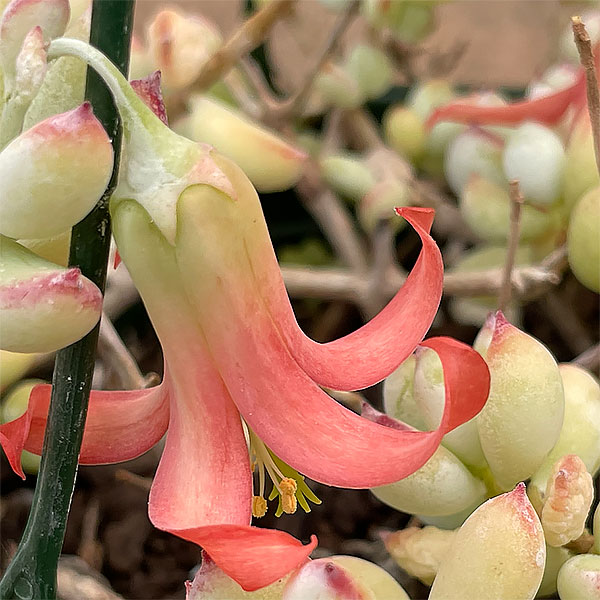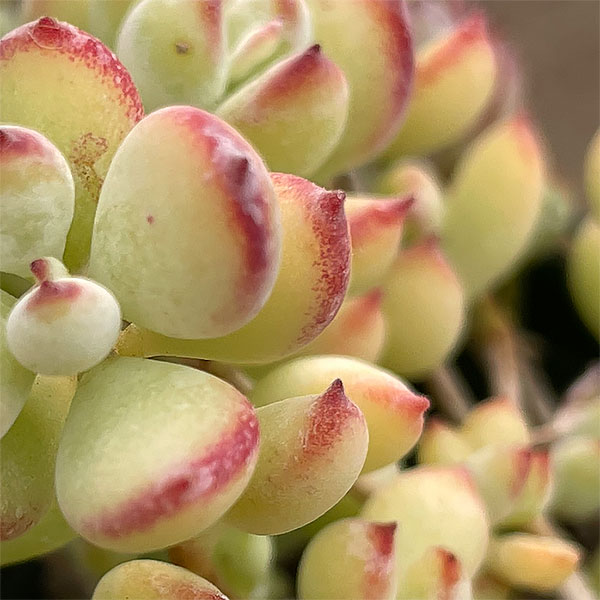This is a member of Crassulacae family and Cotyledon pendens is perhaps one of the best flowering types for growing in a hanging basket.

It comes from Eastern Cape region of South Africa where it grows naturally on cliff faces, hence the common name of ‘Cliff cotyledon’.
This naturally a branching succulent, the long trailing stems will take root when they come into contact with soil. These stems can reach over 50cm in length, grey green leaves and then the very attractive bell shaped flowers are vibrant, an orange red colour. To add to the attraction the petals of the flowers are recurved.
New foliage is covered with a white powder, this is a method of adapting to the hot dry climate. Tis is an easy care plant in a tall bowl or a hanging basket where the stems can be allowed to trail down.

How to Grow Cotyledon pendens
In its natural habitat Cotyledon pendens summers that are hot with good rainfall and winters that are cold a dry.
The soil is very well drained and the area along the Base River is frost free. It grows in a similar climate to the more widely found Crassula perforata and Crassula cordata. You would also find Haemanthus albiflos growing nearby.
Climate
Warm summers, cool winters but not frosts and snow. Grow this one in containers and overwinter indoors in cooler climate zones.
Light Requirements
- Cotyledon pendens is best grown in good light however not full sun especially in summer.
- Good morning sun and dappled shade in the afternoon is ideal.
- Indoors, when growing near windows, rotate the plant 90 degrees every 3 – 4 days to ensure even growth,
- A lack of light can cause leaf drop.
- To much hot sun can cause leaf burn
Watering Cotyledon pendens
- Cotyledon pendens requires water during summer months.
- Always allow the soil to dry between waterings.
- In summer water once a week.
- In winter given that the temperature will be colder, water once every 3 weeks.
- Indoors, try to water the soil rather than the foliage to help prevent fungal disease.
Water well during summer and hold back on water from the end of summer through winter as the plants goes into dormancy.
Only water when the growing medium begins to dry and always ensure that drainage is good.
Soil
A well drained gritty soil is essential. A specialist succulent and cactus potting mix is suitable.
Fertilizer
Add some slow release type fertilizer to the potting mix when repotting.
Top dress with just a little fertiliser each year in spring.
Top Tips
Good light and some spring moisture along with a little fertiliser will ensure good flowering and good growth.
Other Cotyledon species of interest.
- Cotyledon orbiculata
- Cotyledon tomentosa
- Cotyledon ladismithiensis
- Cotyledon papillaris
- Cotyledon woodii
- Cotyledon campanulata

